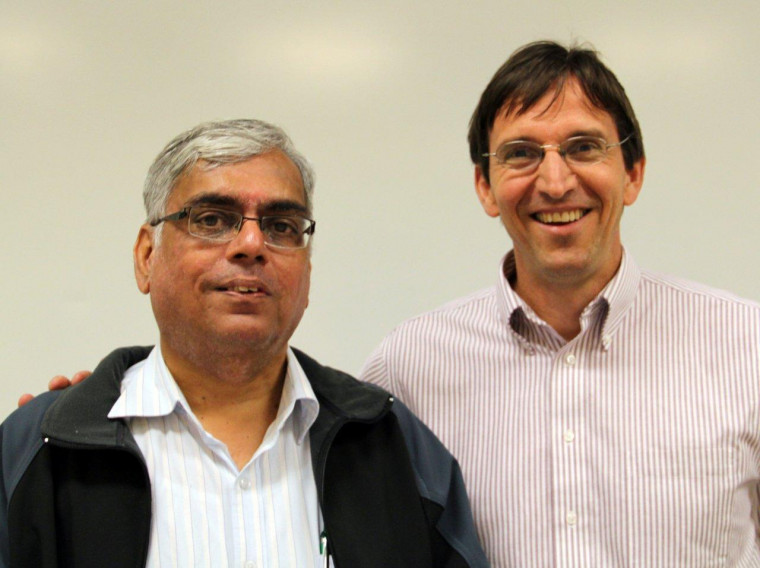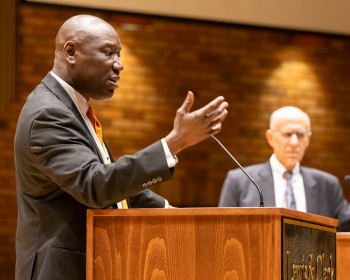October 26, 2011
Leading Mumbai Environmental Activist Visits the Law School
Activist Debi Goenka of the Conservation Action Trust visits Lewis & Clark Law School.
Open gallery

<picture class="lw_image"> <source type="image/webp" media="(max-width: 500px)" srcset="/live/image/gid/24/width/500/25182_goenka.rev.1373935717.webp 1x, /live/image/scale/2x/gid/24/width/500/25182_goenka.rev.1373935717.webp 2x"/> <source type="image/webp" media="(max-width: 800px)" srcset="/live/image/gid/24/width/800/25182_goenka.rev.1373935717.webp 1x"/> <source type="image/webp" media="(min-width: 801px)" srcset="/live/image/gid/24/width/1000/25182_goenka.rev.1373935717.webp 1x"/> <source type="image/jpeg" media="(max-width: 500px)" srcset="/live/image/gid/24/width/500/25182_goenka.rev.1373935717.jpg 1x, /live/image/scale/2x/gid/24/width/500/25182_goenka.rev.1373935717.jpg 2x"/> <source type="image/jpeg" media="(max-width: 800px)" srcset="/live/image/gid/24/width/800/25182_goenka.rev.1373935717.jpg 1x"/> <source type="image/jpeg" media="(min-width: 801px)" srcset="/live/image/gid/24/width/1000/25182_goenka.rev.1373935717.jpg 1x"/> <img src="/live/image/gid/24/width/1000/25182_goenka.rev.1373935717.jpg" width="1000" height="748" alt="Debi Goenka and Professor Craig Johnston" data-max-w="1280" data-max-h="957"/></picture>
Debi Goenka and Professor Craig Johnston
Never doubt the power of a soft-spoken individual to effect significant, positive change. Meet Debi Goenka, a living testament to the value of persistence and smart advocacy.
Goenka is a highly-regarded environmental activist from Mumbai, India, who visited Lewis & Clark Law School during the last week of September 2011. He co-founded and currently sits on the executive board of the Conservation Action Trust (CAT) headquartered in Mumbai. CAT’s mission is to protect biodiversity, prevent forest diversion, and defend ecologically essential mangroves.
When the Sierra Club invited Goenka to visit the United States this fall to launch a cooperative conservation campaign with CAT, he took the opportunity to visit Lewis & Clark Law School at the invitation of Law Professor Craig Johnston. Johnston first met Goenka in March 2011 at an environmental enforcement conference in Bangalore, India. Lewis & Clark is embarking on three exciting new partnerships with National Indian Law Schools; this conference was an early example of the many collaborations and exchanges to come.
During his visit to Lewis & Clark, Goenka sat in on environmental law classes, met with faculty, and delivered a lecture on environmental activism and litigation in India. Faculty and students from the Pacific Environmental Advocacy Center (PEAC), the International Law Society (ILS), and the Environmental LLM Program attended this lecture and contributed to a stimulating Q&A session.
We sat down with Goenka to follow up on some of the points he made during the lecture.
PEAC: Tell us more about your work in India, and what brought you to Lewis & Clark Law School on this visit.
DEBI GOENKA: I work with a nonprofit organization called the Conservation Action Trust (CAT). Our main priority is to protect our biodiversity and our forests. We have also been working on a campaign to protect our coastal areas and mangroves. Over the years, I have been involved in several hundred public interest cases that we have filed against the government for non-implementation of environmental laws. Prof. Craig Johnston invited me over to talk about my public interest litigation with your students and faculty.
PEAC: What work are you doing related to climate change?
DG: Protection of forests, mangroves (mangroves have been shown to store far more carbon than most tropical forests), and other bio-diversity has been a great challenge, particularly since our economy is still growing. We have always been conscious of the fact that economic growth cannot be allowed at the cost of the environment and we have been attempting to get the government to strike a balance. The work that I have done has led to the protection of several thousands of acres of forests and mangroves.
We are trying to educate people about the vast disparity that exists between the “haves” and the “have nots”, and also trying to convince the haves to reduce their consumption. While I was here, I was told that the typical American uses about 14,000 kilowatt hours (kWh) of electricity every year. By contrast, in India our per capita consumption is 700 kWh per year. Now if every Indian aspires to consume 14,000 kWh per year, the atmospheric CO2 levels will probably exceed 700 parts per million. We certainly do not want this to happen, which is why we are advocating green and sustainable growth in India.
PEAC: How do lawyers help you with your work in India?
DG: We have a wonderful team of great lawyers who work for us pro bono. There are also lawyers who donate money to us in addition to their time. Without their commitment, our efforts would have been much less productive.
PEAC: How can US law students help environmental causes in India?
DG: They could come and intern with NGOs who are fighting to protect the environment.
PEAC: What do you see in CAT’s future?
DG: CAT has a bright future. We cannot have economic growth at the cost of the environment. Over 400 million Indians depend on the forests and the oceans for their survival, and they cannot be sacrificed at the altar of “development”.
Goenka is a highly-regarded environmental activist from Mumbai, India, who visited Lewis & Clark Law School during the last week of September 2011. He co-founded and currently sits on the executive board of the Conservation Action Trust (CAT) headquartered in Mumbai. CAT’s mission is to protect biodiversity, prevent forest diversion, and defend ecologically essential mangroves.
When the Sierra Club invited Goenka to visit the United States this fall to launch a cooperative conservation campaign with CAT, he took the opportunity to visit Lewis & Clark Law School at the invitation of Law Professor Craig Johnston. Johnston first met Goenka in March 2011 at an environmental enforcement conference in Bangalore, India. Lewis & Clark is embarking on three exciting new partnerships with National Indian Law Schools; this conference was an early example of the many collaborations and exchanges to come.
During his visit to Lewis & Clark, Goenka sat in on environmental law classes, met with faculty, and delivered a lecture on environmental activism and litigation in India. Faculty and students from the Pacific Environmental Advocacy Center (PEAC), the International Law Society (ILS), and the Environmental LLM Program attended this lecture and contributed to a stimulating Q&A session.
We sat down with Goenka to follow up on some of the points he made during the lecture.
PEAC: Tell us more about your work in India, and what brought you to Lewis & Clark Law School on this visit.
DEBI GOENKA: I work with a nonprofit organization called the Conservation Action Trust (CAT). Our main priority is to protect our biodiversity and our forests. We have also been working on a campaign to protect our coastal areas and mangroves. Over the years, I have been involved in several hundred public interest cases that we have filed against the government for non-implementation of environmental laws. Prof. Craig Johnston invited me over to talk about my public interest litigation with your students and faculty.
PEAC: What work are you doing related to climate change?
DG: Protection of forests, mangroves (mangroves have been shown to store far more carbon than most tropical forests), and other bio-diversity has been a great challenge, particularly since our economy is still growing. We have always been conscious of the fact that economic growth cannot be allowed at the cost of the environment and we have been attempting to get the government to strike a balance. The work that I have done has led to the protection of several thousands of acres of forests and mangroves.
We are trying to educate people about the vast disparity that exists between the “haves” and the “have nots”, and also trying to convince the haves to reduce their consumption. While I was here, I was told that the typical American uses about 14,000 kilowatt hours (kWh) of electricity every year. By contrast, in India our per capita consumption is 700 kWh per year. Now if every Indian aspires to consume 14,000 kWh per year, the atmospheric CO2 levels will probably exceed 700 parts per million. We certainly do not want this to happen, which is why we are advocating green and sustainable growth in India.
PEAC: How do lawyers help you with your work in India?
DG: We have a wonderful team of great lawyers who work for us pro bono. There are also lawyers who donate money to us in addition to their time. Without their commitment, our efforts would have been much less productive.
PEAC: How can US law students help environmental causes in India?
DG: They could come and intern with NGOs who are fighting to protect the environment.
PEAC: What do you see in CAT’s future?
DG: CAT has a bright future. We cannot have economic growth at the cost of the environment. Over 400 million Indians depend on the forests and the oceans for their survival, and they cannot be sacrificed at the altar of “development”.
Law Communications is located in room 304 of Legal Research Center (LRC) on the law Campus.
MSC: 51
email jasbury@lclark.edu
voice 503-768-6605
Cell: 626-676-7923
Assistant Dean,
Communications and External Relations, Law School
Judy Asbury
Law Communications
Lewis & Clark Law School
10101 S. Terwilliger Boulevard MSC 51
Portland OR 97219

